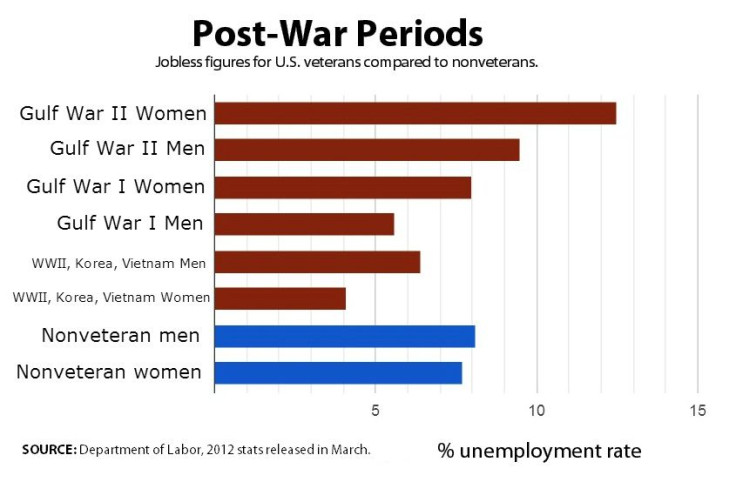As Labor Department Ups Ante On Hiring Former Service Members, Women From Second Gulf War Are Most Likely To Need That Work

For the first time in 40 years, the U.S. Department of Labor changed regulations that require companies vying for federal contracts to hire veterans and disabled people, which could be welcome news for the biggest category of jobless veterans: women who served in Iraq and Afghanistan.
“The reason why unemployment rates are higher for [more recent] women veterans is because they are more likely to have children in their care,” Jasmine Boothe, a disabled former Army captain who served 13 years, told International Business Times on Thursday. “Sometimes employment is not attainable because child care may be unattainable.”
Iraq and Afghanistan War veterans are the only category of former service members whose jobless rates are higher than the national average, a problem that has elicited a number of legislative moves in recent years, including reinstating a tax credit for businesses that hire veterans. But the Veterans Administration has also been slammed for accumulating hundreds of thousands of unsettled disability claims that peaked at 897,000 in 2011, according to the Veterans Administration's Inspector General.
The unemployment rate for female veterans who served during the wars in Iraq and Afghanistan was 12.5 percent in 2012, according to the latest available data from U.S. Bureau of Labor Statistics. That’s considerably higher than the 7.7 percent for nonveteran women and the 6.7 percent total U.S. unemployment rate.

Under the new Department of Labor rules, which went into effect on March 24, for any company seeking a government contract, at least 7 percent of that company’s workforce must be comprised of people with disabilities, and each such company must have a percentage of veterans commensurate with the national percentage of the workforce comprised of veterans, which currently stands at 8 percent. Prior to the recent change, the rule simply said companies vying for federal contracts must “take affirmative action to employ and advance in employment qualified covered veterans.” Now, there are specific percentage quotas assigned to that.
Boothe, who now assists homeless female veterans through her four-year-old non-profit organization, Final Salute, based in Alexandria, Va., said that 18 out of the 100 female vets her organization helped last year were veterans from the most recent conflicts. With the draw down of troops from Iraq and Afghanistan, she expects more women who served in these conflicts to find themselves without homes or jobs.
According to the Department of Veterans Affairs, there are about 440,000 U.S. female veterans who have served since the Sept. 11, 2001, attacks.
© Copyright IBTimes 2024. All rights reserved.






















